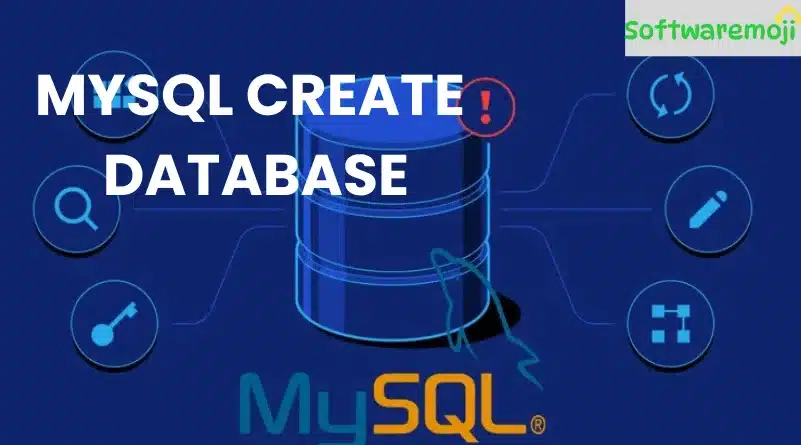
Introduction
How to Create a Database in MySQL: MySQL is one of the most popular relational database management systems (RDBMS) used worldwide. Whether you’re a beginner or an experienced developer, understanding how to create a MySQL database and tables is essential. This guide will walk you through the process using SQL queries and MySQL Workbench.
Table of Contents
- How to Create a Database in MySQL
- Creating a Table in MySQL
- MySQL Data Types Explained
- Best Practices for Database Creation
- Creating ER Diagrams & Forward Engineering in MySQL
1. How to Create a Database in MySQL
How to Create a Database in MySQL: MySQL allows you to create a database using a simple SQL query. Follow these steps:
Basic Syntax
To create a database, use the following SQL command:
sql
CREATE DATABASE database_name;
Example: Creating a database named movies
sql
CREATE DATABASE movies;
Alternatively, you can use:
sql
CREATE SCHEMA movies;
Using IF NOT EXISTS
If you are working in a shared environment, you may want to ensure that the database does not already exist before creating it. You can do this using:
sql
CREATE DATABASE IF NOT EXISTS movies;
Setting Character Set & Collation
MySQL allows you to specify the character set and collation for storing non-English data.
sql
CREATE DATABASE movies CHARACTER SET utf8mb4 COLLATE utf8mb4_general_ci;
Viewing Existing Databases
To check if your database has been created, use:
sql
SHOW DATABASES;
2. How to Create a Table in MySQL
How to Create a Database in MySQL: Once you have created a database, the next step is to create tables.
Basic Table Creation Syntax
sql
CREATE TABLE table_name (
column_name data_type constraints
);
Example: Creating a Members Table
sql
CREATE TABLE IF NOT EXISTS Members (
membership_number INT AUTO_INCREMENT PRIMARY KEY,
full_name VARCHAR(150) NOT NULL,
gender VARCHAR(10),
date_of_birth DATE,
address VARCHAR(255),
email VARCHAR(255) UNIQUE
);
3. MySQL Data Types Explained
How to Create a Database in MySQL: MySQL supports various data types categorized into:
1. Numeric Data Types
| Data Type | Range (Signed) | Range (Unsigned) |
| TINYINT | -128 to 127 | 0 to 255 |
| SMALLINT | -32,768 to 32,767 | 0 to 65,535 |
| INT | -2,147,483,648 to 2,147,483,647 | 0 to 4,294,967,295 |
| BIGINT | -9,223,372,036,854,775,808 to 9,223,372,036,854,775,807 | 0 to 18,446,744,073,709,551,615 |
2. Text Data Types
| Data Type | Max Length |
| VARCHAR(n) | Up to 65,535 characters |
| TEXT | 65,535 characters |
| MEDIUMTEXT | 16,777,215 characters |
| LONGTEXT | 4,294,967,295 characters |
3. Date/Time Data Types
| Data Type | Format |
| DATE | YYYY-MM-DD |
| DATETIME | YYYY-MM-DD HH:MM:SS |
| TIMESTAMP | YYYYMMDDHHMMSS |
| TIME | HH:MM:SS |
4. Other Data Types
- ENUM: Stores predefined values (e.g., ‘Male’, ‘Female’).
- SET: Similar to ENUM but allows multiple values.
- BOOL: Stores Boolean values (0 or 1).
Example: Creating a Table with Various Data Types
sql
CREATE TABLE data_types_example (
id INT AUTO_INCREMENT PRIMARY KEY,
name VARCHAR(50),
age TINYINT,
salary DECIMAL(10,2),
joining_date DATE,
is_active BOOL
);
4. Best Practices for Database Creation
✅ How to Create a Database in MySQL: Use Uppercase for SQL Keywords – e.g., CREATE DATABASE MyDB;
✅ End Queries with a Semicolon (;)
✅ Avoid Spaces in Table/Column Names – Use underscores (e.g., first_name)
✅ Choose the Right Data Type – Avoid overusing TEXT or VARCHAR(255)
✅ Use IF NOT EXISTS to Avoid Errors
5. Creating ER Diagrams & Forward Engineering in MySQL Workbench
MySQL Workbench allows you to design an Entity-Relationship (ER) diagram and convert it into SQL scripts automatically.
Steps to Create a Database Using ER Diagram in MySQL Workbench:
- Open MySQL Workbench and create a new model.
- Draw your ER diagram using tables, relationships, and attributes.
- Click on Database → Forward Engineer.
- Select the MySQL Server Connection.
- Configure options and review the SQL script before execution.
- Execute the script to create the database and tables.
Conclusion
- How to Create a Database in MySQL: The CREATE DATABASE command is used to create a new database in MySQL.
- The CREATE TABLE command helps structure your data within the database.
- Understanding MySQL data types ensures efficient storage and retrieval.
- Using MySQL Workbench’s ER diagrams and forward engineering simplifies database design.
🔹 Next Steps:
✅ Practice creating a database and tables in MySQL.
✅ Try designing an ER diagram in MySQL Workbench.
✅ Learn about MySQL Queries, Joins, and Indexing in our next guide!
Would you like a guide on MySQL Joins or Indexing Techniques next? Let me know!
